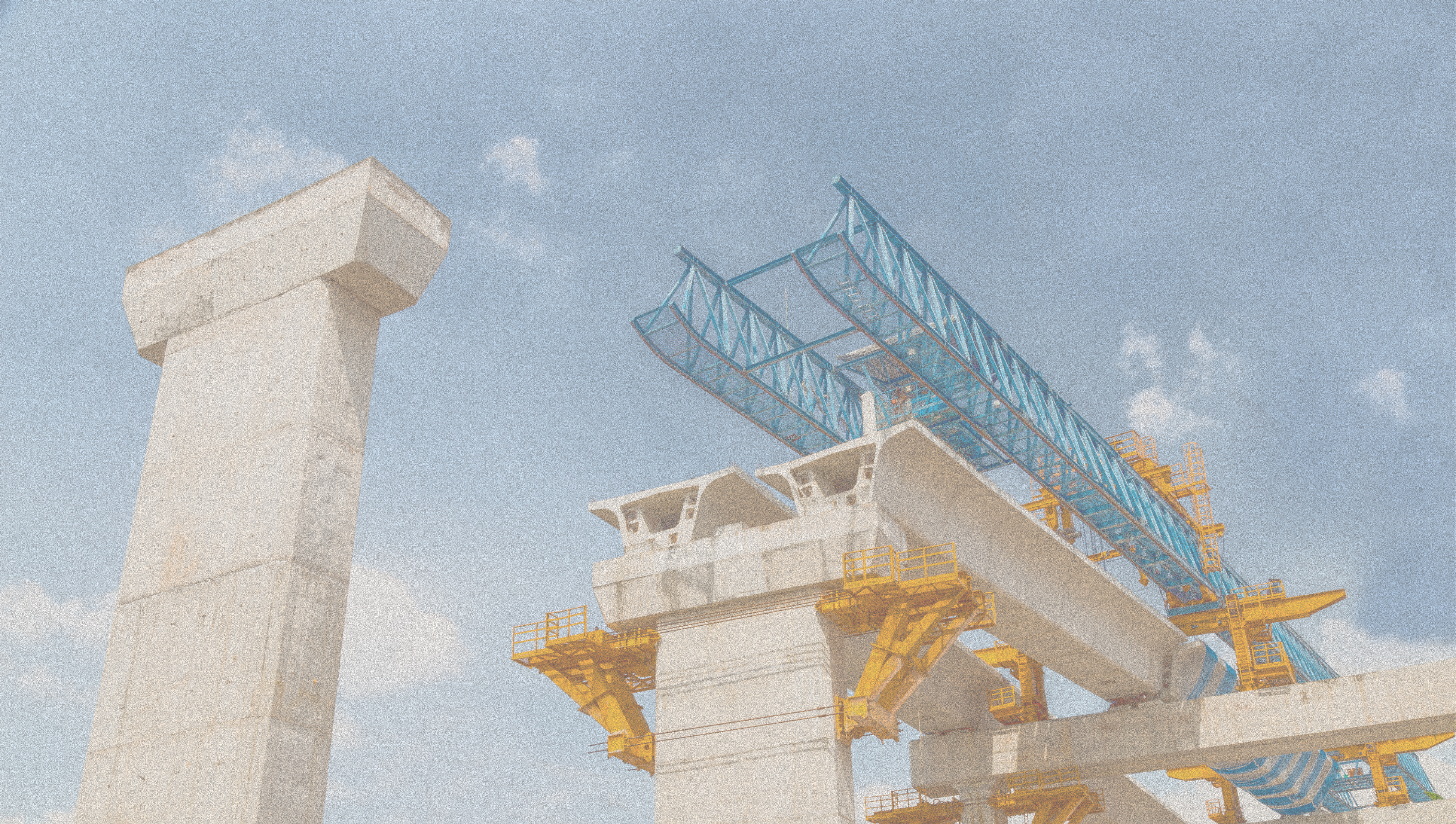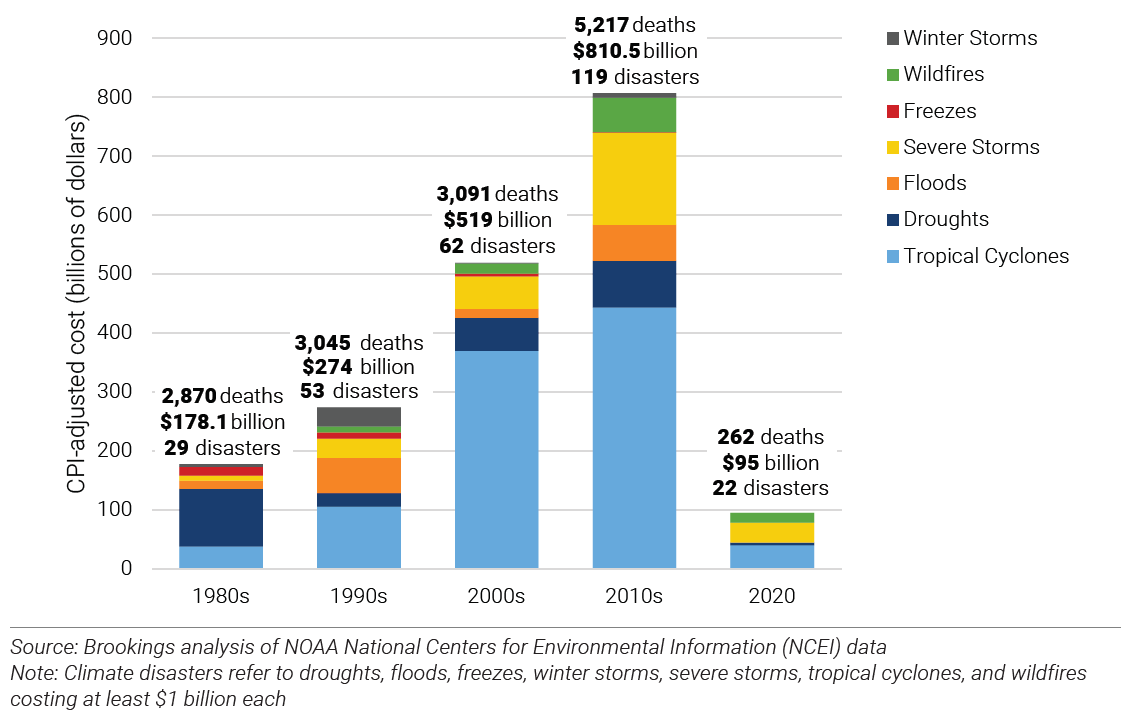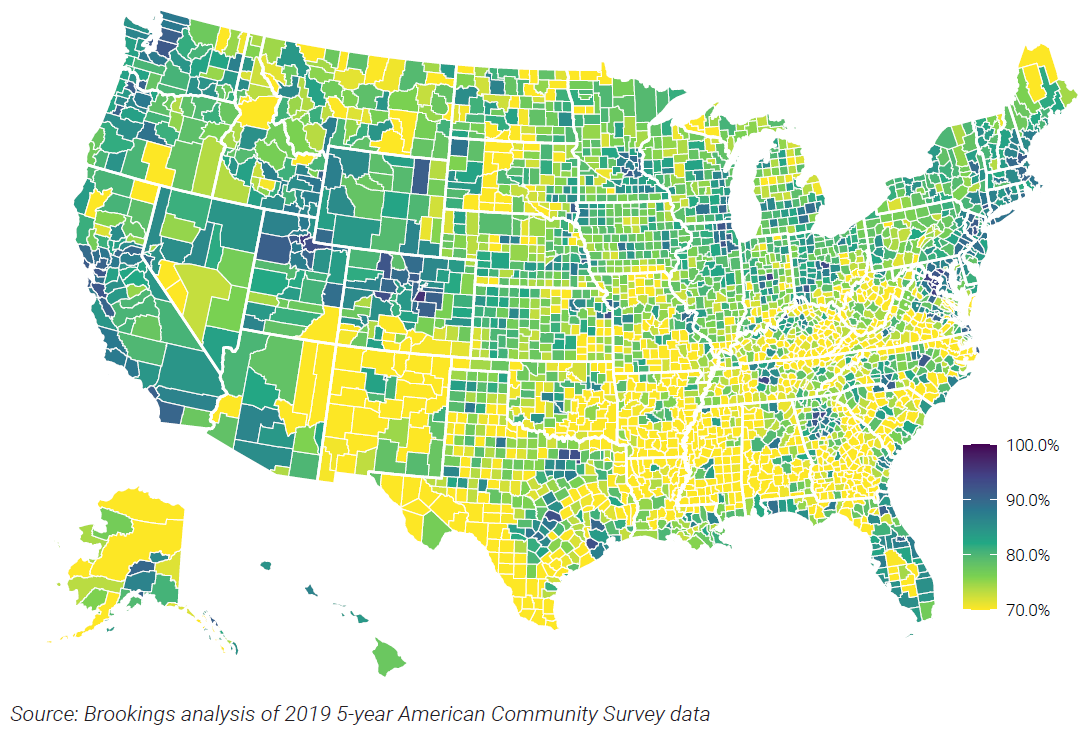
Rebuild with purpose:
Editor’s note: In case you missed it, you can watch here an event with the Brookings Metro team, outside experts, and Sens. Maria Cantwell and Tom Carper on the future of American infrastructure, held on April 15, 2021.
Downloads
Policymakers, practitioners, and the general public increasingly agree that our infrastructure systems are under pressure. Storm surges and coastal flooding continue to wreak havoc on our cities and towns. A lack of world-leading digital infrastructure has made it harder for businesses and people to compete in the global information economy. Outdated pipes and streets impact the health and safety of too many people.
Simply repairing our outmoded infrastructure systems with the same traditional policies, technologies, and designs is not enough. Americans are ready for a grand reimagining of and reinvestment in our infrastructure to revitalize the transportation, water, energy, and broadband systems that power our economy.
Our new report, Rebuild with purpose: An affirmative vision for 21st century American infrastructure, serves as the foundation for a new federal vision for American infrastructure. The report crafts an integrated plan to address four cross-cutting forces of change, and recommends a three-part framework to guide Congress and federal agencies’ strategic direction.

Today, we are living with the legacies of the last great federal infrastructure vision from the mid-20th century. But we are also living with that vision’s flaws. Disproportionate spending on highways stretched distances between people and businesses, divided neighborhoods, harmed our environment, and made transportation a burdensome expense. Construction in flood plains and sensitive coastal areas exposed us to higher risks. Limited direct investment in water utilities contributed to public health crises such as the one in Flint, Mich. And a hands-off approach to broadband left students and workers digitally disconnected in the COVID-19 pandemic.
There is a strategic interrelationship between public infrastructure investment and a dynamic, equitable market. With infrastructure a major topic of federal debate in 2021, now is the time to adopt an affirmative vision.
Clarifying national priorities
Our current moment provides an opportunity for action. Many past reports—from academia, government, business, and elsewhere—have designed solutions isolated around transportation, water, energy, and telecommunications needs. That is not this report. Infrastructure’s role is to deliver shared, sustainable prosperity across all types of projects, places, and people—and that requires a fundamental reimagining of how we talk about and frame our infrastructure needs.
Crafting a more integrated, coordinated vision must address two emerging and durable forces that impact all of our infrastructure systems:
- The planet’s worsening climate crisis requires a resilient built environment to protect communities and enable them to thrive. Climate disasters cost the U.S. $81 billion per year in the 2010s, up from $18 billion per year in the 1980s. Fossil fuels are the source of 60% of the country’s electricity and an even larger share of the country’s transportation services, leading to net increases in greenhouse gas emissions. Meanwhile, the U.S. may lose access to one-third of its freshwater supply in the next 50 years due to poor infrastructure quality, unchecked land development, and agricultural pollutants.
Figure 1. Rising costs of U.S. climate disasters, 1980-2020

- The digital economy is transforming how people and businesses connect, demanding new skills to succeed and upending data security. Connectivity gaps, limited digital skills, and a lack of affordable options have left at least 16 million households without a broadband subscription of any kind. Precision agriculture and small-town manufacturers frequently can’t access broadband connectivity, including 72% of farms without high-speed wireline. Meanwhile, rising cybersecurity attacks introduce a new kind of uncertainty for essential infrastructure operations.
Figure 2. Household broadband adoption rates across the United States, 2019

Evolving challenges around climate and technology are not only impacting how our infrastructure systems perform, but also calling into question our capacity to manage and respond to these impacts. Providing safe, reliable, affordable, and accessible infrastructure requires leaders to harness two other forces of change:
- Infrastructure industries need a range of skilled workers to design, build, and operate the country’s critical networks. Decades of rising income inequality, continued automation, and loss of unionized jobs have put American workers at a disadvantage, especially women, people of color, and those without advanced degrees. Infrastructure occupations can offer better pay and opportunity, but recruitment issues, inflexible training, and insufficient retention have dried up our talent pipeline. More than 25% of the current infrastructure workforce will need to be replaced over the next decade (and more than 10% in some occupations will need to be replaced each year) due to retirements and other employment shifts.
Figure 3. Annual wage comparison, infrastructure occupations vs. all occupations, 2019

- The country cannot modernize infrastructure systems if state and local governments do not have the fiscal resources they need. Even though state and local governments cover 77% of public spending on transportation and water resources, they struggle to operate modern asset management systems and faced 25% inflation in construction costs over the past decade. Regional fragmentation often creates diseconomies of scale, while state politics can lead to excessive construction in slow-growth places. Households often bear the burden as vital infrastructure services become more expensive.
>> Read more about the report’s vision to address fiscal health on page 45 of the full report PDF.
Figure 4. Indexed change in the price of selected infrastructure services, 2000 to 2019

Designing a future-looking federal infrastructure plan
These generational challenges also create generational opportunities. Transitioning to renewable energy sources, limiting development in vulnerable locations, and adopting more resilient building standards can help avoid the worst environmental impacts while still adapting to an evolving climate. Expanding broadband connectivity, skills programming, and sensor deployments can deliver economic efficiency and equity in the digital age. Creating new sector partnerships, expanding work-based learning programs, and leading more visible outreach for disadvantaged and underrepresented workers can ensure infrastructure industries serve as a growing source of economic prosperity. States and localities with more stable fiscal footing can boost net infrastructure investment and experiment with new data, designs, and projects.
These opportunities should serve as the foundation for a new affirmative federal vision. Instead of stubbornly attempting to spend more within traditional programs and expecting different results, congressional leaders and their executive branch partners should design policy to solve 21st century challenges and break free from decades of path dependencies.
To solve today’s challenges and capture future opportunities, we recommend Congress and federal agencies use a three-part framework to guide their strategic direction:
- The federal government should update how agencies measure infrastructure needs and connect that information to shared goals. We need to better track the condition, performance, and use of different infrastructure assets. That means expanding how we manage assets (both natural and humanmade) and better assessing environmental impacts on communities. It also means better understanding infrastructure costs and barriers facing workers, private households, and small businesses. A new Federal Data Reserve can manage standards for data privacy, cybersecurity, data sharing, and data storage.
- Based on outputs from retooled measurement systems, the federal government should modernize physical assets and better serve user needs. New design standards can improve digital capability and resiliency. Direct spending can upgrade physical networks across transportation, water, energy, and telecommunications systems. New equity-focused programming—including affordability programs—can help all households and businesses access those systems. And new fiscal instruments can help states and localities more flexibly and proactively execute new types of plans and projects.
- The federal government should commit more resources to experiment with physical technologies, fiscal practices, training systems, and applied management practices. The federal government can promote testing of new technologies, from the trillion-dollar autonomous vehicle industry to small-scale materials pilots. New data approaches such as an encrypted universal identification card for individuals and an artificial intelligence ethics laboratory can remake how we move through the world. Commitment to digital skills development can empower American workers for decades to come.
Figure 5. Theory of change: how to rebuild with purpose

Remaking capital-intensive systems like infrastructure takes a generation. But that is not an excuse to ignore legislative opportunities—like the palpable urgency in 2021—to test what’s possible and evaluate progress along the way. We need to use this moment to initiate short-term actions in support of longer-term structural changes. America has the trillions of dollars necessary to adopt a new vision, but we cannot afford to waste money or time on the wrong projects, policies, and actions.
Investing in infrastructure is always an optimistic choice. It reflects a collective belief that we, the people, can pool our resources to grow our businesses, improve our quality of life, and protect our environment for the generations to follow. The United States was built for optimistic choices. It’s time to rebuild.
The authors would like to thank Tara Pelton for invaluable research and writing assistance for this project.


